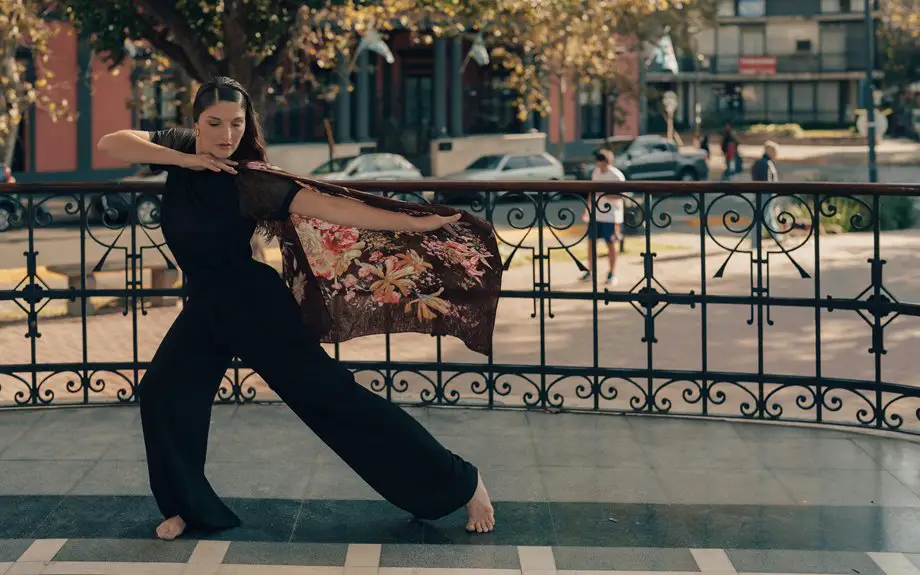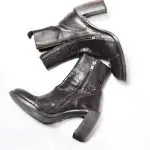When you’re gearing up for summer activities, choosing the right fabric can make all the difference in comfort and performance. Lightweight moisture-wicking materials pull sweat away from your skin, helping you stay dry and cool under the sun. But not all fabrics handle heat and humidity the same way, so knowing which options balance breathability, durability, and quick drying is key. Let’s explore what fabrics stand out for your next outdoor adventure.
Table of Contents
Key Takeaways
- Polyester is a lightweight, durable synthetic fabric that effectively wicks moisture and dries quickly for summer activities.
- Nylon offers strong abrasion resistance and excellent moisture management, ideal for rugged outdoor use.
- Merino wool naturally regulates temperature, wicks sweat, and provides odor resistance in breathable, lightweight summer garments.
- Blended fabrics like cotton-polyester combine softness with moisture-wicking and quick-drying benefits for enhanced comfort.
- Look for fabrics with high breathability, quick-drying properties, and UPF ratings for optimal summer performance and sun protection.
Benefits of Moisture-Wicking Fabrics in Summer
When summer heat hits, moisture-wicking fabrics keep you cool by pulling sweat away from your skin.
These fabrics use advanced cooling technologies that enhance sweat evaporation, preventing that sticky, uncomfortable feeling. You’ll notice how quickly moisture moves to the fabric’s surface, drying fast and maintaining comfort during intense activities.
Effective sweat management means your skin stays dry, reducing irritation and chafing. Plus, by regulating your body temperature, these fabrics help you perform better and stay energized longer.
Whether you’re hiking, running, or just out in the sun, moisture-wicking materials provide a breathable barrier that promotes airflow and heat dissipation.
Choosing the right fabric with these benefits makes your summer activities more enjoyable and helps you beat the heat efficiently.
Top Synthetic Fibers for Summer Activities
Although natural fibers have their place, synthetic fibers often outperform them in moisture-wicking and durability for summer activities.
When you choose fabrics like polyester, nylon, and spandex, you tap into synthetic advantages that keep you dry and comfortable. These fibers excel at pulling sweat away from your skin and drying quickly, thanks to their engineered fiber performance.
Polyester, for example, is lightweight and resistant to shrinking and stretching, making it ideal for active wear. Nylon adds strength and abrasion resistance, perfect for rugged outdoor pursuits. Spandex offers excellent stretch, giving you freedom of movement without sacrificing moisture control.
Natural Fiber Options for Breathable Comfort
You’ll find natural fibers like merino wool offer excellent moisture-wicking and odor control for your summer gear.
Bamboo fabric stands out with its soft feel that keeps you comfortable all day.
Plus, silk provides a breathable luxury that helps regulate your body temperature when it’s hot outside.
Benefits of Merino Wool
Because Merino wool naturally regulates temperature and wicks moisture away from your skin, it’s an excellent choice for staying comfortable during summer activities.
You’ll appreciate the Merino advantages like odor resistance and softness, which keep you fresh and itch-free even during intense workouts.
Wool versatility means you can rely on Merino for everything from running shirts to hiking socks, as it adapts well to different climates and activities.
Unlike synthetic fabrics, it’s biodegradable and renewable, making it an eco-friendly option.
Plus, Merino dries relatively quickly, so you won’t stay damp or uncomfortable.
When you choose Merino wool, you get a breathable, lightweight fabric that works hard to keep you cool and dry, perfect for all your summer adventures.
Bamboo Fabric Softness
Merino wool sets a high standard for natural fibers, but bamboo fabric offers its own unique benefits when it comes to softness and breathability.
When you wear bamboo, you’ll notice its silky smooth texture that feels gentle against your skin, perfect for hot summer days. Bamboo’s natural breathability helps wick moisture away, keeping you cool and dry.
You’ll also appreciate bamboo sustainability—it grows quickly without pesticides, making it an eco-friendly choice.
Beyond softness, bamboo versatility lets you find fabrics ranging from lightweight to slightly more durable weaves, so you can pick what suits your activity best.
If you want a fabric that’s kind to your skin and the planet, bamboo’s softness and eco-conscious nature make it a smart pick for summer comfort.
Silk’s Breathable Luxury
While silk may seem like a luxurious choice for summer, its natural breathability makes it surprisingly practical for warm weather.
You’ll find silk excels at moisture-wicking, keeping you dry and cool during outdoor activities. Its fibers allow air to circulate, preventing overheating without sacrificing comfort.
However, proper silk care is essential to maintain its performance and delicate feel. Plus, if you’re eco-conscious, you’ll appreciate silk sustainability efforts that reduce environmental impact.
Here’s why silk stands out:
- Lightweight and breathable for all-day comfort
- Naturally moisture-wicking to manage sweat
- Requires gentle silk care to preserve quality
- Produced with increasing focus on silk sustainability
Choose silk for breathable luxury that’s both functional and eco-friendly this summer.
Blended Fabrics: Combining Performance and Comfort
You’ll find that blended fabrics offer the perfect mix of performance and comfort by combining the best qualities of different fibers.
Popular combinations like cotton-polyester blends wick moisture effectively while staying soft against your skin.
Choosing the right blend can keep you cool and comfortable during any summer activity.
Benefits of Fabric Blends
Because no single fabric can perfectly meet all your summer activity needs, blended fabrics offer a smart solution by combining the best qualities of different materials.
When you choose blends, you enjoy enhanced fiber compatibility, ensuring fabrics work well together to boost comfort and performance. Plus, many blends reduce environmental impact by optimizing resource use and durability.
Here’s why you should consider them:
- Improved moisture-wicking and breathability for all-day comfort.
- Increased durability and resistance to wear and tear.
- Better stretch and fit, adapting to your movements.
- Easier care with wrinkle resistance and quick drying.
Blended fabrics balance performance and comfort, making your summer activities more enjoyable without sacrificing sustainability.
Popular Blend Combinations
Blended fabrics bring together different fibers to create materials that work better for your summer wardrobe.
Popular combinations like cotton blends and polyester blends offer a perfect balance of comfort and performance. Cotton blends give you softness and breathability while enhancing moisture-wicking capabilities, making them ideal for casual outings.
Polyester blends, on the other hand, excel at durability and quick-drying, which is perfect if you’re into intense activities or sports. When you choose polyester blends, you benefit from fabrics that resist wrinkles and hold color well, keeping your gear looking fresh.
Key Features to Consider When Choosing Fabrics
When selecting fabrics for summer activities, focusing on moisture-wicking ability is crucial to keep you cool and dry.
Prioritize moisture-wicking fabrics to stay cool and dry during all your summer adventures.
But don’t stop there — consider these key features to find the perfect fabric for your needs:
- Fabric Weight: Choose lightweight fabrics that won’t weigh you down or trap heat.
- Breathability Factors: Look for materials that allow air to circulate freely, enhancing comfort.
- Quick-Drying Capability: Opt for fabrics that dry fast to prevent chafing and discomfort.
- Durability: Ascertain the fabric can withstand frequent use and washing without losing performance.
Care Tips for Maintaining Moisture-Wicking Properties
Selecting the right moisture-wicking fabric is just the start; maintaining its performance over time requires proper care. To keep your gear working its best, follow specific fabric care guidelines.
Always wash moisture-wicking clothes in cold water to avoid damaging the fibers. Use a gentle detergent and skip fabric softeners—they can clog the fabric’s pores, reducing breathability.
Turn garments inside out before washing to protect the surface. Avoid high heat when drying; instead, air dry or use a low-heat setting to prevent shrinking or weakening the fabric.
Also, avoid bleach as it breaks down the fibers. By following these washing tips and fabric care practices, you guarantee your moisture-wicking clothes stay effective, comfortable, and durable for all your summer activities.
Frequently Asked Questions
Can Moisture-Wicking Fabrics Cause Skin Irritation or Allergies?
You’d think moisture-wicking fabrics couldn’t possibly irritate skin, but if you have skin sensitivity, certain fabric compositions might cause reactions. Always check labels and test new fabrics to avoid any uncomfortable allergies or irritation.
How Do Moisture-Wicking Fabrics Perform in Water-Based Activities?
You’ll find moisture-wicking fabrics have low water absorption, so they don’t stay soaked. They dry quickly, keeping you comfortable during water-based activities. However, they might feel clingy when wet, so consider your activity type.
Are Moisture-Wicking Fabrics Environmentally Friendly or Sustainable?
You’ll find some moisture-wicking fabrics made from sustainable materials, but not all are eco friendly. Look for brands focusing on eco friendly production to guarantee your clothing supports sustainability while keeping you comfortable.
Can Moisture-Wicking Fabrics Be Used for Casual Wear in Non-Athletic Settings?
You might think moisture-wicking fabrics only suit workouts, but they’re perfect for casual style too. You’ll love their fashion versatility—they keep you comfortable and dry all day, making them ideal for everyday wear.
What Are the Best Layering Strategies Using Moisture-Wicking Fabrics in Summer?
You should use layering techniques by starting with a moisture-wicking base layer to keep sweat off your skin, then add lightweight, breathable pieces for summer outfits. This helps you stay cool and comfortable all day.
- Finding the Perfect Match: Pairing Prints With Kona Cotton Solids - June 20, 2025
- How to Care For and Wash Your Kona Cotton Fabric Projects - June 20, 2025
- A Quilter’s Review of Kona Cotton’s Durability and Weight - June 20, 2025





